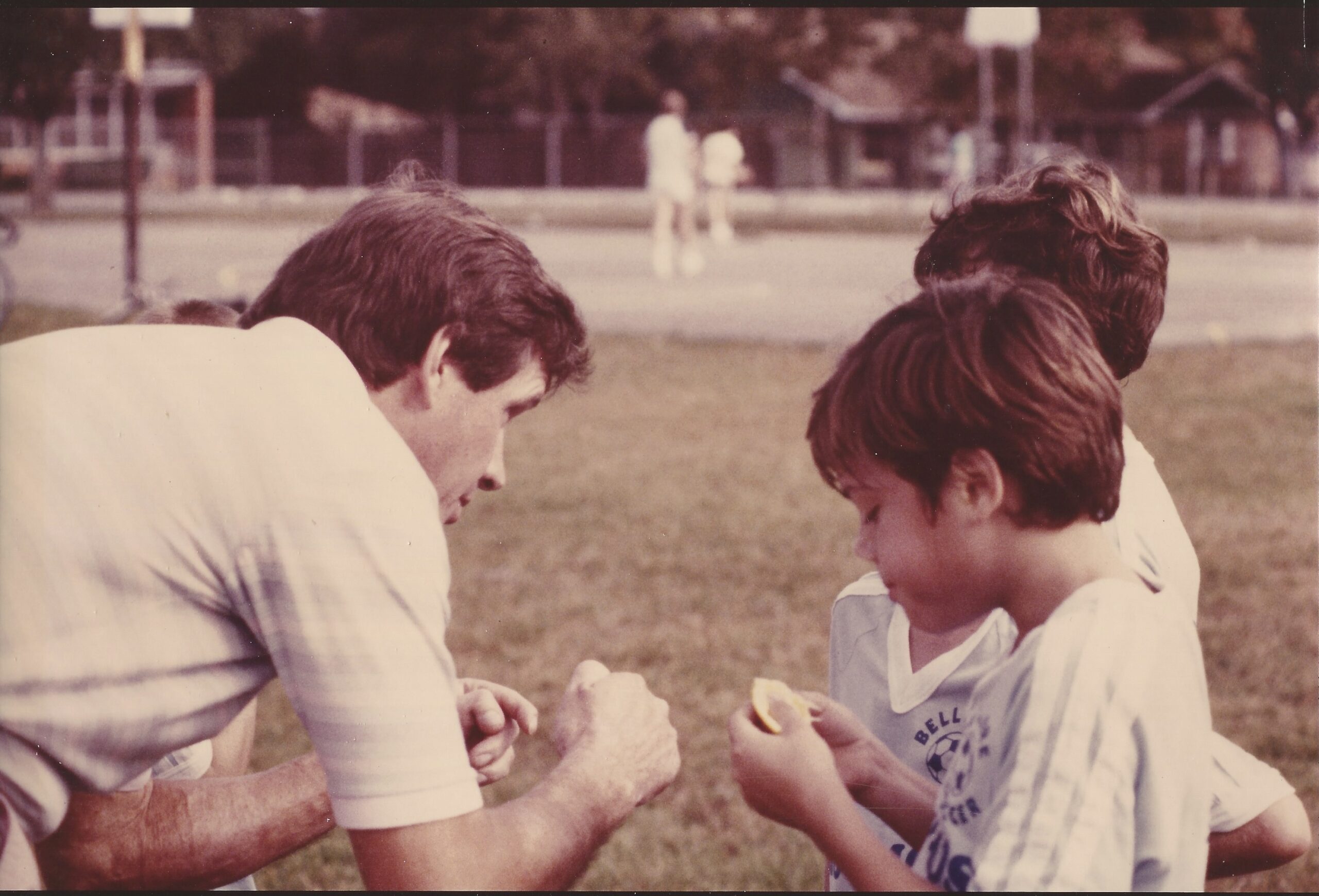My average patient sees me twice a week for 1 hour. If I could ensure patients were completely healed with 2 hours per week of work, I’d be the best physical therapist on the planet. I can’t do that, but my patients do heal. The secret? Creating buy-in and making sure patients have the tools to help themselves. As a leader, you might only get 2 hours a week with members of your team…and maybe not even that much time. How I make sure my patients heal and how you make sure your team is successful involve many of the same key elements.
Share a Common Goal
People don’t stumble into success-they set goals and they plan for it. It may seem like the goal in physical therapy is obvious-to repair the injury. It goes much deeper than that. I make sure my patients see the injury repair not as an end-goal, but as a step toward their end goal. When patients first come to see me, I always ask them what they want to be able to do. Some people want to run marathons; some simply want to live without pain. Understanding their goals is important to my planning their recovery.
As a leader, it’s important to communicate your goals clearly with your team and help them map out a journey to achieve them. They’re not going to automatically understand how the goals and processes to achieve them align. You have to be intentional with these discussions. It is also critical as a leader that you understand the individual and goals of your team members. Understanding their goals will allow you to place the right people in the right positions so that everyone can be successful.
Build a Foundation
You have to walk before you can run. Many of my patients get injured because they transition abruptly from a sedentary lifestyle to an intense physical activity they’re not prepared for. Right now, I have a patient I initially treated for a shoulder injury. She told me she wants to join a softball team-so now that her shoulder is healed, we’re working on training her muscles in such a way that her first sprint to first base won’t send her right back into physical therapy.
The best leaders I’ve known have used that same principle. They train their teams intentionally by starting with the basics like expectations, procedures and company culture. I put the “share a common goal” section first for a reason-it’s the first step toward building that strong foundation. Giving people a clear roadmap to success will ensure that your team has the tools to achieve excellence.
Lead by Example
I never ask my patients to do anything I wouldn’t do. To be frank, some exercises suck. I don’t know anyone who enjoys doing burpees. So when I have patients do burpees, I make sure that I’m doing some right alongside them. It’s essential that they see that I’m willing to do things right alongside them to ensure that they succeed. Your team needs to see you in the trenches. They will never get motivated to do less pleasant aspects of the job if they think you’re simply outsourcing the work that you don’t want to do.
Demonstration is an essential first step in teaching. Telling someone how to do something rarely sticks the way that demonstrating it does. Demonstrate the processes AND the work ethic you want your team to employ. Great leadership is about inspiring people to work hard and sitting in an office analyzing spreadsheets and drafting memos isn’t going to inspire anyone.
Promoting Quality Feedback
Notice I didn’t say “providing quality feedback.” Feedback should always be a two-way street. If I’m not getting feedback from my physical therapy patients, I run the risk of injuring them even further. “This hurts!” is important feedback that lets me know we should stop immediately. It’s also critical that I give them feedback when it comes to their form-if I continue to let them do an exercise incorrectly or with poor form, again, I run the risk of making the initial problem worse. It must be the same 2 way street for a team and their leadership. As a leader, you might not always know what is and isn’t working in the trenches; your team is also uniquely qualified to identify areas that might be able to be improved or streamlined. They need to feel comfortable coming to you and saying, “this isn’t working” or “I think we can do this in a better way” so you can be sure your business is operating efficiently.
When you’re giving your team feedback, it’s easy to focus on the negative, but positive feedback is just as important. People leave jobs and start “quiet quitting” when they don’t feel their efforts are being recognized or appreciated. When I tell my clients they’re crushing it, they light up…and usually work even harder. Giving positive feedback to your team will get you the same results.
Communicate Struggles and Successes
When you or your team have a big victory, it’s important to celebrate it. As I stated earlier, people are motivated by success and positivity. When my patients are healed and healthy, I always take a moment to sit down and review with them about how far they’ve come. Reflecting on that success helps ensure they keep taking care of themselves when they’re out of therapy and I’m not around to guide them. When you take a moment with your team to reflect on their victories, they will be encouraged to continue doing those things that lead them to achieve that level of success. Just as we have health crises with our bodies, there will be crises in business. It is in these times it is even more important to find those little moments of win. It’s easy to give up when you can’t see the light in the darkness, but there is always light somewhere. Find it and celebrate it with your team.
While it is critical to celebrate your wins, it’s equally important to be transparent about struggles. We’re all human-and that means sometimes we struggle and sometimes we outright fail. Not admitting your failures will foster an environment of distrust. Your team needs to see the humanity in you; they know you’re fallible just like everyone else. If you’ve hired good people and they know you’re struggling, they’ll do what they can to step up and help you…especially if you’ve laid the groundwork I’ve outlined above.
In the intricate dance of leadership, where the dynamics of a therapy room find resonance in the boardroom, the parallels are undeniable. As a physical therapist, my commitment is not merely to mend injuries but to empower individuals to heal themselves, a principle that extends seamlessly to the realm of leadership. The journey from the therapy room to the boardroom is paved with shared victories, reflective celebrations, and an unyielding commitment to growth. Just as patients emerge stronger from rehabilitation, teams flourish under leadership that echoes the principles of collaboration, resilience, and continual improvement.




